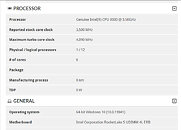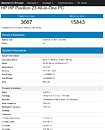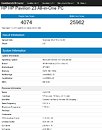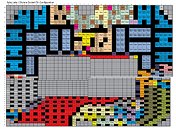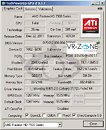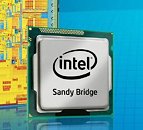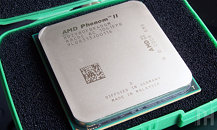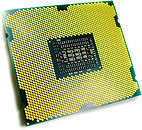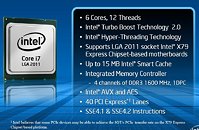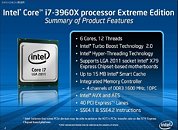Apr 10th, 2025 07:17 EDT
change timezone
Latest GPU Drivers
New Forum Posts
- Looking for input on fan placement for my Define R5 (9)
- Problem "Vu meter Windows 11 24h2 missing" (0)
- MSI 4090 Pump Out Is Real (6)
- How is the Gainward Phoenix Model in terms of quality? (5)
- RX 9000 series GPU Owners Club (277)
- OEM and Retail GPU (11)
- Downgrading bios on asrock A320 board (2)
- Will you buy a RTX 5090? (478)
- Star Citizen (2515)
- ## [Golden Sample] RTX 5080 – 3300 MHz @ 1.020 V (Stock Curve) – Ultra-Stable & Efficient (45)
Popular Reviews
- The Last Of Us Part 2 Performance Benchmark Review - 30 GPUs Compared
- ASRock Z890 Taichi OCF Review
- MCHOSE L7 Pro Review
- Sapphire Radeon RX 9070 XT Pulse Review
- PowerColor Radeon RX 9070 Hellhound Review
- Upcoming Hardware Launches 2025 (Updated Apr 2025)
- Sapphire Radeon RX 9070 XT Nitro+ Review - Beating NVIDIA
- Acer Predator GM9000 2 TB Review
- ASUS GeForce RTX 5080 Astral OC Review
- UPERFECT UStation Delta Max Review - Two Screens In One
Controversial News Posts
- NVIDIA GeForce RTX 5060 Ti 16 GB SKU Likely Launching at $499, According to Supply Chain Leak (174)
- MSI Doesn't Plan Radeon RX 9000 Series GPUs, Skips AMD RDNA 4 Generation Entirely (146)
- Microsoft Introduces Copilot for Gaming (124)
- AMD Radeon RX 9070 XT Reportedly Outperforms RTX 5080 Through Undervolting (119)
- NVIDIA Reportedly Prepares GeForce RTX 5060 and RTX 5060 Ti Unveil Tomorrow (115)
- Nintendo Confirms That Switch 2 Joy-Cons Will Not Utilize Hall Effect Stick Technology (100)
- Over 200,000 Sold Radeon RX 9070 and RX 9070 XT GPUs? AMD Says No Number was Given (100)
- Nintendo Switch 2 Launches June 5 at $449.99 with New Hardware and Games (99)
News Posts matching #6 core
Return to Keyword BrowsingMediaTek Takes Entry Chromebook Performance to the Next Level with New Kompanio Chipsets
MediaTek today announced its new Kompanio chipsets for Chromebooks: the Kompanio 520 and Kompanio 528. With upgraded computing performance and battery life for entry level Chromebooks, the newest Kompanio chipsets provide a seamless experience so consumers can browse, cloud game, stream and use Google Play apps while enjoying all-day battery life.
"Enhanced power efficiency, speedy performance and reliable connectivity are at the core of a great user experience, and that's exactly what MediaTek's new Kompanio chipsets deliver," said Adam King, Vice President and General Manager, Client Computing Business Unit at MediaTek. "As the No. 1 provider of Arm-based Chromebooks, MediaTek makes the latest AI, connectivity, display and imaging features accessible at every price point."
"Enhanced power efficiency, speedy performance and reliable connectivity are at the core of a great user experience, and that's exactly what MediaTek's new Kompanio chipsets deliver," said Adam King, Vice President and General Manager, Client Computing Business Unit at MediaTek. "As the No. 1 provider of Arm-based Chromebooks, MediaTek makes the latest AI, connectivity, display and imaging features accessible at every price point."

ASRock Industrial Announces New Range of Industrial Motherboards with 12th Gen Intel Core Processors
ASRock Industrial launches a new range of industrial motherboards powered by 12th Gen Intel Core Processors (Alder Lake-S) with up to 16 cores and 24 threads, supporting the new Intel 600 Series W680, Q670, and H610 chipsets. Featuring high computing power with performance hybrid architecture and enhanced AI capabilities, rich IOs and expansions for up to quad displays 4K@60 Hz, USB 3.2 Gen2x2 (20 Gbit/s), triple Intel 2.5 GbE LANs with real-time TSN, multi M.2 Key M, ECC memory, plus TPM 2.0, and wide voltage support. The new series covers comprehensive form factors, including industrial Mini-ITX, Micro-ATX, and ATX motherboards for diverse applications, such as factory automation, kiosks, digital signage, smart cities, medical, and Edge AIoT applications.

Intel Rocket Lake CPU Appears with 6 Cores and 12 Threads
We have been hearing a lot about Intel's Rocket Lake lineup of processors. They are supposed to be a backport of Willow Cove 10 nm core, adapted to work on a 14 nm process for better yielding. Meant to launch sometime around late 2020 or the beginning of 2021, Rocket Lake is designed to work on the now existing LGA1200 socket motherboards, which were launched just a few days ago along with Intel Comet Lake CPUs. Rocket Lake is there to supply the desktop segment and satisfy user demand, in light of lacking 10 nm offers for desktop users. The 10 nm node is going to present only on mobile/laptop and server solutions before it comes to the desktop.
In the latest report on 3D Mark, the hardware leaker TUM APISAK has found a Rocket Lake CPU running the benchmark and we get to see first specifications of the Rocket Lake-S platform. The benchmark ran on 6 core model with 12 threads, that had a base clock of 3,5 GHz. The CPU managed to boost up to 4,09 GHz, however, we are sure that these are not final clocks and the actual product should have even higher frequencies. Paired with Gen12 Xe graphics, the Rocket Lake platform could offer a very nice alternative to AMD offerings if the backport of Willow Cove goes well. Even though it is still using a 14 nm node, performance would be good. The only things that would be sacrificed (from backporting) are die space and efficiency/heat.
In the latest report on 3D Mark, the hardware leaker TUM APISAK has found a Rocket Lake CPU running the benchmark and we get to see first specifications of the Rocket Lake-S platform. The benchmark ran on 6 core model with 12 threads, that had a base clock of 3,5 GHz. The CPU managed to boost up to 4,09 GHz, however, we are sure that these are not final clocks and the actual product should have even higher frequencies. Paired with Gen12 Xe graphics, the Rocket Lake platform could offer a very nice alternative to AMD offerings if the backport of Willow Cove goes well. Even though it is still using a 14 nm node, performance would be good. The only things that would be sacrificed (from backporting) are die space and efficiency/heat.

ASUS Announces A15/17 and F15/17 TUF Gaming Laptops
At this year's CES, ASUS announced the latest addition to their TUG gaming lineup of laptops - two 15-inch TUF Gaming A15 and TUF Gaming F15, and two 17-inch TUF Gaming A17 and TUF Gaming F17. Being advertised as durable, high-performance gaming laptops, the TUF lineup is here to bring "unprecedented experience for the price" meaning that the pricing of these models will be more than adequate for what they offer. Inside these new machines are the latest mobile processors from both Intel and AMD. The "A" series, as it is called, is an AMD based solution that features Ryzen 4000 series of mobile processors, which can be configured to go up to 8 cores and 16 threads, while the so-called "F" series is based on Intel's 10th generation of Core processors, which can be configured to go up to 6 cores and 12 threads.

Benchmarks Surface on Intel's Next-Gen Comet Lake-S 10-Core, 6-Core CPUs
Benchmarks have been uploaded to popular benchmarking utility Geekbench's servers, and they seemingly allow us to look into Intel's next-gen Comet Lake-S processors. The results, which have likely been taken from pre-release hardware (which means benchmarks and even proper identification of features on the CPUs shouldn't be taken as guarantees), help paint a picture on Intel's next release all the same.
Processor information for the 10-core, 20-thread CPU gives us a 1.51 GHz base clock and 3.19 GHz boost, with the chip featuring 32 Kb each for L1 instruction and L1 data caches (x10 cores, 640 KB total) 256 KB L2 cache (x10 cores, for a total of 2.5 MB) and 20 MB L3 cache. The six-core part, on the other hand, is reported as featuring a 1.99 GHz base clock and 2.89 GHz boost clock, 384 KB total L1 instruction and data caches (32 KB x 6 cores), 256 KB L2 cache (x6 cores, for a total of 1.5 MB) and 12 MB L3 cache. This means each core is in Comet Lake-S is paired with 2 MB of L3 cache, which is being cut-down alongside cores. Like almost all other Intel desktop CPU releases, these CPU cores will be paired with an IGP in the form of Intel UHD Graphics 630, which features up to 24 Execution Units (EUs). With Intel's 10-core CPU being expected to be the cream of the crop on the company's mainstream CPU lineup come Comet Lake-S, comparisons to AMD's own core density are moot, in that there is no real competition available, should that top core count actually materialize.
Processor information for the 10-core, 20-thread CPU gives us a 1.51 GHz base clock and 3.19 GHz boost, with the chip featuring 32 Kb each for L1 instruction and L1 data caches (x10 cores, 640 KB total) 256 KB L2 cache (x10 cores, for a total of 2.5 MB) and 20 MB L3 cache. The six-core part, on the other hand, is reported as featuring a 1.99 GHz base clock and 2.89 GHz boost clock, 384 KB total L1 instruction and data caches (32 KB x 6 cores), 256 KB L2 cache (x6 cores, for a total of 1.5 MB) and 12 MB L3 cache. This means each core is in Comet Lake-S is paired with 2 MB of L3 cache, which is being cut-down alongside cores. Like almost all other Intel desktop CPU releases, these CPU cores will be paired with an IGP in the form of Intel UHD Graphics 630, which features up to 24 Execution Units (EUs). With Intel's 10-core CPU being expected to be the cream of the crop on the company's mainstream CPU lineup come Comet Lake-S, comparisons to AMD's own core density are moot, in that there is no real competition available, should that top core count actually materialize.

ASUS Confirms Z270 Platform Could be Compatible with Intel Coffee Lake CPUs
In an interview with Bit-tech, ASUS ROG motherboard product manager Andrew Wu has let the proverbial cat out of the bag: apparently, compatibility of Z270 boards with Coffee Lake processors wouldn't have been impossible after all. When asked why the new Coffee Lake CPUs aren't compatible with the previously released Z270 platform, Andrew Wu explained that it" (...) depends on Intel's decision." Andrew Wu also went on to mention that Intel's stated power delivery reasons don't "make much difference", and that ASUS themselves could make their Z270 motherboards compatible with Coffee Lake. For that, however, they'd need "(...) an upgrade from the ME [Management Engine] and a BIOS update", for which "Intel somehow has locked the compatibility."
It seems all of that extra "pin-count" doesn't really matter in the grand scheme of the current Coffee Lake lineup with up to six core processors - the CPU socket and platform as designed with Z270 would have been able to handle the increased core counts and power loads. The question gets murkier with Intel's ability to release an 8-core CPU to the Z370 platform though - that particular amount of cores might indeed prove to be too much for Z270's power delivery. Making an educated guess, it would seem that Intel could have allowed for Coffee Lake compatibility on Z270 motherboards on CPUs up to 6 cores, but would need the new revisions on the Z370 platform to allow for operation of 8-core Coffee Lake chips.
It seems all of that extra "pin-count" doesn't really matter in the grand scheme of the current Coffee Lake lineup with up to six core processors - the CPU socket and platform as designed with Z270 would have been able to handle the increased core counts and power loads. The question gets murkier with Intel's ability to release an 8-core CPU to the Z370 platform though - that particular amount of cores might indeed prove to be too much for Z270's power delivery. Making an educated guess, it would seem that Intel could have allowed for Coffee Lake compatibility on Z270 motherboards on CPUs up to 6 cores, but would need the new revisions on the Z370 platform to allow for operation of 8-core Coffee Lake chips.

Intel Stresses on "40% More Performance" for 8th Generation Core Family
Intel today announced its 8th generation Core processor family, with new mainstream desktop (MSDT) processor SKUs. The company is stressing on these chips featuring "40% more performance over the previous-generation," even though the "Coffee Lake" micro-architecture is essentially based on the "Skylake" and "Kaby Lake" architectures. The company is arriving at 40% by across the board increases in core-counts. Quad-core Core i5 and Core i7 SKUs now have 6 cores as opposed to 4 (a 33% multi-threaded performance increase straight off the bat), and the remaining 7% from higher clocks or micro-architecture level incremental updates; while Core i3 now includes quad-core SKUs.

Intel Core "Coffee Lake" Lineup Specs Confirmed in Leaked Distributor Event
Intel recently concluded an event intended for local distributors in China, a key presentation slide of which was snapped and posted online. The slide confirms the company's product-stack for the mainstream desktop platform, and its augmentation with the first wave of 8th generation Core "Coffee Lake" SKUs. The slide also confirms that Intel will be replacing current Core i7 4-core/8-thread SKUs with Core i7 6-core/12-thread ones; Core i5 4-core/4-thread SKUs with 6-core/6-thread ones, and Core i3 2-core/4-thread SKUs with 4-core/4-thread ones, marking the biggest fundamental update to the product stack since the Core MSDT family started out a decade ago, with the Core "Lynnfield" and "Clarkdale" processors.
The slide further describes per-core performance increases ranging between 11-29 percent owing to higher clock-speeds and a slightly newer micro-architecture, and 51-65 percent increases in multi-threaded performance owing to the increasing core-counts across the board. While these SKUs are expected to logically replace the various Core "Kaby Lake" SKUs from their current price-points, there could be a tiny price increase, across the board, which Intel could justify using the higher core-counts.
The slide further describes per-core performance increases ranging between 11-29 percent owing to higher clock-speeds and a slightly newer micro-architecture, and 51-65 percent increases in multi-threaded performance owing to the increasing core-counts across the board. While these SKUs are expected to logically replace the various Core "Kaby Lake" SKUs from their current price-points, there could be a tiny price increase, across the board, which Intel could justify using the higher core-counts.

Intel's Six-core, Coffee Lake CPUs Surface in SiSoftware
Intel's upcoming Coffee Lake architecture, which is now all but confirmed to have been pulled forward by the company in an attempt to staunch the bleeding incurred from AMD's recently launched, table-turning Ryzen processors, has reared its head in SiSoftware. In some benchmarks, what is identified as a 6-core, 6-thread CPU from Intel surface, with a clockspeed @ 3.5 GHz, 1.5 MB L2 cache (256 Kb per core) and 9 MB L3 cache. This L3 cache is quite puzzling, considering how Intel's Kaby Lake architecture features 2 MB of L3 cache per core. If Coffee Lake were to keep most of Kaby Lake's design - which it will - then this chip should feature something along the lines of 12 MB L3 cache. The reduced amount of cache seems to scream at a disabled chip, but this could also be a case of a reporting error.

AMD Starts Selling the Ryzen 5 Processor Family
AMD Ryzen 5 series desktop processors are officially available from today. The lineup is designed to compete with Intel's Core i5 quad-core "Kaby Lake" processor family, and consists of 6-core and 4-core parts carved out of the 14 nm "Summit Ridge" silicon. The lineup begins with the $169 Ryzen 5 1400 and $189 Ryzen 5 1500X quad-core parts, featuring SMT that enable 8 logical CPUs, 8 MB of L3 cache, unlocked multipliers, and XFR on the 1500X. The 1400 is clocked at 3.20 GHz with 3.40 GHz boost, while the 1500X ticks at 3.50 GHz with 3.70 GHz boost, and XFR enabling higher automatic overclocks.
While the Ryzen 5 1400 and 1500X compete with Core i3 and Core i5 "Kaby Lake" models under $200; the $219 Ryzen 5 1600 and $249 1600X six-core parts target the Core i5-7600K, with their 6 cores, 12 threads, 16 MB of L3 caches, and unlocked multipliers. The 1600 is clocked at 3.20 GHz with 3.60 GHz boost, while the 1600X ticks at 3.60 GHz core and 4.00 GHz boost. All four chips are available immediately.
While the Ryzen 5 1400 and 1500X compete with Core i3 and Core i5 "Kaby Lake" models under $200; the $219 Ryzen 5 1600 and $249 1600X six-core parts target the Core i5-7600K, with their 6 cores, 12 threads, 16 MB of L3 caches, and unlocked multipliers. The 1600 is clocked at 3.20 GHz with 3.60 GHz boost, while the 1600X ticks at 3.60 GHz core and 4.00 GHz boost. All four chips are available immediately.
Eurocom Ships Panther 5, Most Powerful Notebook in Existence
Eurocom is shipping the most powerful supercomputer class fully configurable laptop in the world, equipped with NVIDIA GeForce GTX 880M in single and SLI (Dual) configuration, an X79 Express Chipset supporting Intel Core i7-4000 and Intel Xeon E5-2600 V2 processors, up to i7-4960X or Xeon E5-2697 v2, 32 GB DDR3-1600 and 6 TB Of RAID 0/1/5/10 storage. NVIDIA GeForce GTX 880M graphics card has 1536 CUDA cores running at 954 MHz + boost with 8 GB GDDR5 memory running at 2500 MHz. In SLI the two 880M graphics cards offer users a whopping 16 GB DDR5 video memory and 3072 CUDA cores giving Eurocom users epic performance.
"At Eurocom we specialize in offering the most powerful, capable, high quality and upgradeable systems to our clients. The EUROCOM Panther 5 is the epitome of this, it supports a wide variety of processors, graphics, displays, memory and many of components while offering a very high quality chassis." Mark Bialic, Eurocom President. "We choose the absolute best components to offer our customers to build into their systems from NVIDIA GeForce, Quadro and AMD Radeon graphics to Intel Xeon and Core i7 processors as well as Micron memory modules and Intel DC 3700 storage drives, just to name a few. The EUROCOM Panther 5 is built for professionals that require the utmost in reliability and dependability"
"At Eurocom we specialize in offering the most powerful, capable, high quality and upgradeable systems to our clients. The EUROCOM Panther 5 is the epitome of this, it supports a wide variety of processors, graphics, displays, memory and many of components while offering a very high quality chassis." Mark Bialic, Eurocom President. "We choose the absolute best components to offer our customers to build into their systems from NVIDIA GeForce, Quadro and AMD Radeon graphics to Intel Xeon and Core i7 processors as well as Micron memory modules and Intel DC 3700 storage drives, just to name a few. The EUROCOM Panther 5 is built for professionals that require the utmost in reliability and dependability"
Cavium Introduces ThunderX Enterprise Processor
Cavium, Inc., a leading provider of semiconductor products that enable intelligent processing for enterprise, data center, cloud, wired and wireless networking, today announced the introduction of a new game changing category of processors that are workload optimized for a range of applications in the cloud and data center. The 2.5GHz 48 core ThunderX is the world's highest performing low-power 64-bit ARMv8 SoC family of workload optimized processors with a range of SKUs and form factors for high performance volume compute, storage, secure compute and networking specific workloads.
Data center infrastructure transformation is one of the key trends driving IT spending in 2014 and beyond. Analysts predict that the global data center infrastructure market, including servers, storage, networking, security and virtualization, will reach $128 billion in 2014. Key trends driving this disruption include rapid adoption of Software as a Service (SaaS), Platform as a Service (PaaS), and Infrastructure as a Service (IaaS) enabled by Software Defined Data Center (SDDC) with virtualized on demand compute, Software Defined Networking (SDN) and Software Defined Storage (SDS). The continued growth and adoption of Open Source Software with almost 100 billion lines of code and nearly 10 million active developers is also radically changing installed base software requirements.
Data center infrastructure transformation is one of the key trends driving IT spending in 2014 and beyond. Analysts predict that the global data center infrastructure market, including servers, storage, networking, security and virtualization, will reach $128 billion in 2014. Key trends driving this disruption include rapid adoption of Software as a Service (SaaS), Platform as a Service (PaaS), and Infrastructure as a Service (IaaS) enabled by Software Defined Data Center (SDDC) with virtualized on demand compute, Software Defined Networking (SDN) and Software Defined Storage (SDS). The continued growth and adoption of Open Source Software with almost 100 billion lines of code and nearly 10 million active developers is also radically changing installed base software requirements.

ORIGIN PC Unleashes New Game-Changing NVIDIA GeForce GTX 680 and GeForce GTX 675M
ORIGIN PC is excited to announce the launch of the new NVIDIA GeForce GTX 680 video card for their award-winning desktops and the new NVIDIA GeForce GTX 675M notebook GPU for their record breaking EON17-X laptop. Now whether you're gaming at home or on the go, you can now experience faster, smoother and richer gaming like never before. It's more than just innovative, it's game-changing. And to celebrate the launch of the most power efficient GPU ever created, ORIGIN PC is giving away a free 90GB Corsair Force GT Solid State Hard Drive on their systems for a limited time.

HD 7970 Overclocked to 1.26 GHz: 28 nm Tech Really Stretches Its Legs
Welcome to the first TechPowerUp news post of 2012! Read on for a couple of impressive overclocking feats with the HD 7970 graphics card.
It looks like the new AMD Radeon HD 7970 could be a bit of a dark horse and a lot more potent than its stock specifications would suggest - excellent for creating a competitive graphics card market. The reviews at stock speeds show the flagship HD 7970 to be around 10-15% faster than NVIDIA's flagship GTX 580, which doesn't seem all that impressive since the GTX 580 has been on the market for over a year now. However, what the reviews haven't really shown, is what kind of an overclocking monster the HD 7970 is. It definitely looks like AMD could have easily beaten the GTX 580 by a much bigger margin than they did, had they wanted to and it makes one wonder why they didn't.
VR-Zone have spent the New Year weekend overclocking this beast, having reached a whopping 1.26 GHz core clock speed with their HD 7970 - and decent benchmark improvements to go with it. Also, with the fan at 100%, the card never got above a very comfortable 68 degrees centigrade while running Furmark, which is amazing considering how this test is specifically designed to heat a graphics card to the max - but please see the update at the bottom of the article. The stock cooler may be noisy, but it's certainly very effective: an excellent result which will prolong the working life of the card.
It looks like the new AMD Radeon HD 7970 could be a bit of a dark horse and a lot more potent than its stock specifications would suggest - excellent for creating a competitive graphics card market. The reviews at stock speeds show the flagship HD 7970 to be around 10-15% faster than NVIDIA's flagship GTX 580, which doesn't seem all that impressive since the GTX 580 has been on the market for over a year now. However, what the reviews haven't really shown, is what kind of an overclocking monster the HD 7970 is. It definitely looks like AMD could have easily beaten the GTX 580 by a much bigger margin than they did, had they wanted to and it makes one wonder why they didn't.
VR-Zone have spent the New Year weekend overclocking this beast, having reached a whopping 1.26 GHz core clock speed with their HD 7970 - and decent benchmark improvements to go with it. Also, with the fan at 100%, the card never got above a very comfortable 68 degrees centigrade while running Furmark, which is amazing considering how this test is specifically designed to heat a graphics card to the max - but please see the update at the bottom of the article. The stock cooler may be noisy, but it's certainly very effective: an excellent result which will prolong the working life of the card.
Christmas Special: The PC Technology of 2011
Welcome to the TechPowerUp 2011 PC technology Christmas special. We hope that you will enjoy reading it while tucking into your turkey, Christmas presents and a little too much wine... In this article, we go through the technology of 2011 that has had the most significance, the most impact and was generally the most talked about. It's not necessarily the best tech of 2011 which is the most significant though, since lemons can be just as significant as the ground-breakers in how they fail to deliver - and the backlash that goes with it.
January: Intel Sandy Bridge i5 & i7
Released on January 9th, the new Intel Core i5 & i7 processors were based on Intel's second generation Core architecture built on a 32 nm production process (HEXUS review). They included an IGP (Integrated Graphics Processor) physically on the same piece of silicon along with HyperThreading. These new dual and quad core processors soundly beat all previous generations of Intel processors in terms of processing performance, heat, power use, features and left AMD in the dust. Therefore, Intel badly needed some competition from AMD and unless you have been living under a rock, you will know how that turned out in October with the launch of Bulldozer. Sandy Bridge was a sound win and is generally considered to be the only architecture worth considering at this point. The i5-2500K is currently at the sweet spot of price/performance. It comes at a stock speed of 3.3 GHz, but typically overclocks to an amazing 4.5 - 5 GHz with a decent air cooler and without too much difficulty in getting there. Models in the budget i3 range were released at various times later. See this Wikipedia article for details.
January: Intel Sandy Bridge i5 & i7
Released on January 9th, the new Intel Core i5 & i7 processors were based on Intel's second generation Core architecture built on a 32 nm production process (HEXUS review). They included an IGP (Integrated Graphics Processor) physically on the same piece of silicon along with HyperThreading. These new dual and quad core processors soundly beat all previous generations of Intel processors in terms of processing performance, heat, power use, features and left AMD in the dust. Therefore, Intel badly needed some competition from AMD and unless you have been living under a rock, you will know how that turned out in October with the launch of Bulldozer. Sandy Bridge was a sound win and is generally considered to be the only architecture worth considering at this point. The i5-2500K is currently at the sweet spot of price/performance. It comes at a stock speed of 3.3 GHz, but typically overclocks to an amazing 4.5 - 5 GHz with a decent air cooler and without too much difficulty in getting there. Models in the budget i3 range were released at various times later. See this Wikipedia article for details.
Super Talent Introduces Quad-Channel, Quad Rank DDR3 RDIMMs
Super Talent Technology, a leading manufacturer of NAND flash storage solutions, today announces a new line of 1333 MHz, quad rank registered DDR3 RDIMM modules for servers. Today's new motherboards that support the new 16 core processors, now require a new type of RDIMMs, quad-channel DDR3. On the heels of their single and dual rank RDIMMs, Super Talent is pleased to announce a new Quad-Rank Module for those who require even more DRAM capacity.
At 8 GB per module, today's servers can now support a maximum of 128 GB of RAM. These modules have passed vigorous testing using the new AMD Interlagos compatible motherboards and even support fully loaded configurations at speeds up to 1066 MHz. If you're deploying a new server and have been looking for RDIMMs to deliver maximum performance and capacity, you owe it to yourself to call SuperTalent. Products available and shipping now. Part Number: W13RC8G8x - 8GB RDIMM Module.
At 8 GB per module, today's servers can now support a maximum of 128 GB of RAM. These modules have passed vigorous testing using the new AMD Interlagos compatible motherboards and even support fully loaded configurations at speeds up to 1066 MHz. If you're deploying a new server and have been looking for RDIMMs to deliver maximum performance and capacity, you owe it to yourself to call SuperTalent. Products available and shipping now. Part Number: W13RC8G8x - 8GB RDIMM Module.

AMD Bulldozer A Surprisingly Sell-Out Sales Success. Victims: Phenom II & Athlon II
AMD's new Bulldozer "FX" series of processors may be very lacklustre performers in reviewer's benchmarks and have garnered considerable scorn in enthusiast circles, but they're a very good performer for AMD's bottom line. Incredibly, they are selling out as soon as shops get them in stock - and they are not even priced very competitively against Intel's offerings, so perhaps the "It's an 8 core CPU!!" marketing is working well on the uninformed "enthusiast" after all? Mind you, what enthusiast, however uninformed, wouldn't know exactly how these products perform? Every tech website and computer magazine has covered these chips by now. The mind boggles.
Super Talent Introduces Quad-Channel DDR3 RDIMMs at 1600 MHz
Super Talent Technology, a leading manufacturer of Flash storage solutions and DRAM memory modules, today announces a new line of high speed, quad-channel Registered DDR3 RDIMM modules for servers running at 1600 MHz.
Super Talent is committed to bringing our customers the very the latest in technology. Today's new motherboards that support the new 16 core processors, now require a new type of RDIMMs, quad-channel DDR3. Super Talent is pleased to announce that theses new modules have passed extensive qualification testing and can support full speed at full loading.
Super Talent is committed to bringing our customers the very the latest in technology. Today's new motherboards that support the new 16 core processors, now require a new type of RDIMMs, quad-channel DDR3. Super Talent is pleased to announce that theses new modules have passed extensive qualification testing and can support full speed at full loading.

Microsoft Working On Not One, But Two New Xbox Product Lines
Finally, next generation gaming consoles are around the corner. It will have an uplifting effect on the entire gaming industry as it will raise the bar for visual and technical detail in games. Many of today's games are designed keeping consoles in mind, and so their PC platform versions don't look much more than what has come to be known as "console-ports". There are a few exceptions to this, but it would be refreshing to see most game developers move on to creating games that take advantage of today's insanely powerful PC platform, because the console platform will have caught up technologically.
Rumors have it, that Microsoft will be developing not one, but two product lines that succeed the Xbox 360, and we're not talking about product variants here, but two distinct lines. The first of the two will be an entry-level console designed more like a set-top box, designed around the Kinect controller (perhaps something to compete against Nintendo Wii U). The second product line will be the one that will be supercharged with the latest technologies that will raise the bar in graphics. It will compete with whatever succeeds the Playstation 3. There is talk that it will pack a 6 core processor, an AMD-made GPU, and 2 GB of fast DDR3 memory. This console could be unveiled to the world (although not launched), at the CES event held in January. Meanwhile, Microsoft is allowing TSMC some time to refine its 28 nm bulk process.
Rumors have it, that Microsoft will be developing not one, but two product lines that succeed the Xbox 360, and we're not talking about product variants here, but two distinct lines. The first of the two will be an entry-level console designed more like a set-top box, designed around the Kinect controller (perhaps something to compete against Nintendo Wii U). The second product line will be the one that will be supercharged with the latest technologies that will raise the bar in graphics. It will compete with whatever succeeds the Playstation 3. There is talk that it will pack a 6 core processor, an AMD-made GPU, and 2 GB of fast DDR3 memory. This console could be unveiled to the world (although not launched), at the CES event held in January. Meanwhile, Microsoft is allowing TSMC some time to refine its 28 nm bulk process.

SB-E: Enthusiast Full 8 Core Dual Socket Monsters On The Way Early 2012
The latest Sandy Bridge-E 6 core processors have just been released, to excellent reviews. However, the architecture is designed for 8 cores, so these current i7-3960X & i7-3930K processors actually contain those 8 cores, but with two turned off in order to enable them to fit within a manageable 130 W power envelope. Hence there's quite a bit more potential to be released and soon. Therefore, anyone looking to invest in the premium-priced SB-E platform right now, should note that these processors are at the initial C1 stepping and have the VT-d hardware virtualization issue and PCI-E 3.0 compatibility uncertainty. The VT-d problem will be a real show stopper where hardware acceleration of a virtual machine is a must, so it shouldn't be ignored.
VR-ZONE brings us news that the fully unlocked SB-E 8 core chips will be released as the long awaited Xeon E5 family of processors, which will be built on the C2 stepping, solving the above issues. However, being 8 core, these will be very power hungry indeed, consuming around 150 W at just 3 GHz with all 8 cores active and 20 MB of L3 cache. At 2.5 GHz though, the new processors are expected to fit within the 95 W power envelope.
VR-ZONE brings us news that the fully unlocked SB-E 8 core chips will be released as the long awaited Xeon E5 family of processors, which will be built on the C2 stepping, solving the above issues. However, being 8 core, these will be very power hungry indeed, consuming around 150 W at just 3 GHz with all 8 cores active and 20 MB of L3 cache. At 2.5 GHz though, the new processors are expected to fit within the 95 W power envelope.

Intel Releases Core i7 ''Sandy Bridge-E'' Processors
Intel today released its Core i7-3000 series processor family, codenamed "Sandy Bridge-E". These new processors, along with the new Intel X79 chipset, make up for an entirely new platform. The processors are an upscale of the Sandy Bridge architecture found on chips in the LGA1155 package. The Sandy Bridge-E silicon measures 20.8 x 20.9 mm, with a humungous transistor count of 2.27 billion. In its Core i7-3000 configuration, the silicon has up to 6 cores, up to 15 MB of L3 cache, four DDR3 memory channels, and 40 PCI-Express 3.0 lanes ("some" devices "may" support Gen 3.0, Intel's words).
Sandy Bridge-E has the same instruction set as Sandy Bridge, which includes SSE up to version 4.2, AVX, AES, and features Turbo Boost 2.0, HyperThreading. It's the memory controller that's complete upscale. It features four independent 64-bit paths to DDR3 DIMMs, making it a quad-channel DDR3 IMC. DDR3-1600 MHz is natively supported. There are three models, the Core i7-3960X Extreme Edition leads the pack with a clock speed of 3.30 GHz, 3.90 GHz top Turbo Boost speed, and 15 MB of L3 cache. It has 6 cores and 12 threads with HTT enabled. This chip has all its multipliers unlocked and is geared for overclocking. It is priced at US $990 in 1000 unit tray quantities, though retailers might draw a decent margin for the boxed parts.
Sandy Bridge-E has the same instruction set as Sandy Bridge, which includes SSE up to version 4.2, AVX, AES, and features Turbo Boost 2.0, HyperThreading. It's the memory controller that's complete upscale. It features four independent 64-bit paths to DDR3 DIMMs, making it a quad-channel DDR3 IMC. DDR3-1600 MHz is natively supported. There are three models, the Core i7-3960X Extreme Edition leads the pack with a clock speed of 3.30 GHz, 3.90 GHz top Turbo Boost speed, and 15 MB of L3 cache. It has 6 cores and 12 threads with HTT enabled. This chip has all its multipliers unlocked and is geared for overclocking. It is priced at US $990 in 1000 unit tray quantities, though retailers might draw a decent margin for the boxed parts.

Sandy Bridge-E Benchmarks Leaked: Disappointing Gaming Performance?
Just a handful of days ahead of Sandy Bridge-E's launch, a Chinese tech website, www.inpai.com.cn (Google translation) has done what Chinese tech websites do best and that's leak benchmarks and slides, Intel's NDA be damned. They pit the current i7-2600K quad core CPU against the upcoming i7-3960X hexa core CPU and compare them in several ways. The take home message appears to be that gaming performance on BF3 & Crysis 2 is identical, while the i7-3960X uses considerably more power, as one might expect from an extra two cores. The only advantage appears to come from the x264 & Cinebench tests. If these benchmarks prove accurate, then gamers might as well stick with the current generation Sandy Bridge CPUs, especially as they will drop in price, before being end of life'd. While this is all rather disappointing, it's best to take leaked benchmarks like this with a (big) grain of salt and wait for the usual gang of reputable websites to publish their reviews on launch day, November 14th. Softpedia reckons that these results are the real deal, however. There's more benchmarks and pictures after the jump.
Apr 10th, 2025 07:17 EDT
change timezone
Latest GPU Drivers
New Forum Posts
- Looking for input on fan placement for my Define R5 (9)
- Problem "Vu meter Windows 11 24h2 missing" (0)
- MSI 4090 Pump Out Is Real (6)
- How is the Gainward Phoenix Model in terms of quality? (5)
- RX 9000 series GPU Owners Club (277)
- OEM and Retail GPU (11)
- Downgrading bios on asrock A320 board (2)
- Will you buy a RTX 5090? (478)
- Star Citizen (2515)
- ## [Golden Sample] RTX 5080 – 3300 MHz @ 1.020 V (Stock Curve) – Ultra-Stable & Efficient (45)
Popular Reviews
- The Last Of Us Part 2 Performance Benchmark Review - 30 GPUs Compared
- ASRock Z890 Taichi OCF Review
- MCHOSE L7 Pro Review
- Sapphire Radeon RX 9070 XT Pulse Review
- PowerColor Radeon RX 9070 Hellhound Review
- Upcoming Hardware Launches 2025 (Updated Apr 2025)
- Sapphire Radeon RX 9070 XT Nitro+ Review - Beating NVIDIA
- Acer Predator GM9000 2 TB Review
- ASUS GeForce RTX 5080 Astral OC Review
- UPERFECT UStation Delta Max Review - Two Screens In One
Controversial News Posts
- NVIDIA GeForce RTX 5060 Ti 16 GB SKU Likely Launching at $499, According to Supply Chain Leak (174)
- MSI Doesn't Plan Radeon RX 9000 Series GPUs, Skips AMD RDNA 4 Generation Entirely (146)
- Microsoft Introduces Copilot for Gaming (124)
- AMD Radeon RX 9070 XT Reportedly Outperforms RTX 5080 Through Undervolting (119)
- NVIDIA Reportedly Prepares GeForce RTX 5060 and RTX 5060 Ti Unveil Tomorrow (115)
- Nintendo Confirms That Switch 2 Joy-Cons Will Not Utilize Hall Effect Stick Technology (100)
- Over 200,000 Sold Radeon RX 9070 and RX 9070 XT GPUs? AMD Says No Number was Given (100)
- Nintendo Switch 2 Launches June 5 at $449.99 with New Hardware and Games (99)


